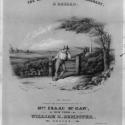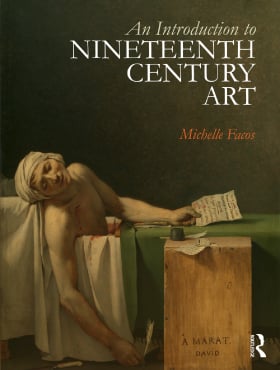Irish Famine
Documentation:
Catherine Marshall notes the lack of nineteenth-century Irish paintings documenting Irish history past and present:
“Irish artists did not paint their history because of a perception (so widely held that it was not always documented) that such work would not be acceptable to the establishment.”
“Brigadier V.R.I. Doyle, brother of Richard (Dicky) Doyle, the well known Victorian illustrator and cartoonist believed the Irish history could not be celebrated until the Act of Union of 1801 was repealed….Doyle may have been right. Certainly the experience of R.G. Kelly, an Irish artist who exhibited a painting of an eviction scene at the British Institution in 1853 would seem to bear this out. Strickland, in his Dictionary of Irish Artists, records that the painting, ‘An Ejectment in Ireland’ or ‘A Tear And a Prayer for Erin’ was ‘much criticized as a political picture, which the artist never intended, and was actually discussed in the House of Commons.’ Kelly got the message and appears to have avoided such subjects for the remainder of his career.
The problem was not the depiction of poverty…but rather the politicization of that poverty in a colonized country. Depictions of Irish poverty by English and Scottish artists seem not to have attracted the same reaction as Kelly’s and some of the best known images of the Famine and the related issues of eviction and emigration were painted by G.F. Watts and Frederick Godall, who were English.”
Catherine Marshall, “Painting Irish History: The Famine,” History Ireland, vol. 4, no. 3 (Autumn 1996): 47, 48-9.
John Turpin offers another reason for the dearth of paintings of The Famine:
“The Famine was the central historical event of nineteenth century Ireland, but its deeply socially destructive nature to all classes made it repellent to artists and patrons alike. It is noteworthy that it was G.F. Watts, the celebrated English artist, who painted The Great Famine (1850), a stark portrayal, which was originally titled ‘Irish Eviction.’ This work reflects not only the individual humanity of Watts, but also the newspaper publicity on the depressed state of rural Ireland since the Famine of 1845-47, which was affecting English public opinion. One of the results of the Famine, the emigration of Irish peasants to work in England, was recorded in Walter Deverell’s The Irish Vagrants (1853) which shows a poor Irish laboring family at harvest time on an English farm, a critique of British as much as Irish rural society.”
John Turpin, “Irish History Painting,” The GPA Irish Arts Review Yearbook (1989-1990): 241.
David Nally explains the colonialist and racist program of English bureaucrats following the annexation of Ireland in 1801, a measure intended to expropriate land for England's benefit:
"Centralized political administration, a unified police force, paid magistrates, public dispensaries, a unified and regulated network of lunatic asylums, and state-backed [secular] elementary-schooling - this was a massive undertaking requiring a new 'biopolitical' regime of calculation and surveillance...By the 1830s, it was widely assumed in British policy circles that Irish poverty was indelibly tied to moral corruption, economic underdevelopment, and agrarian agittion."
"The editors of...Mapping the Great Irish Famine also observe a fairly extensive process of reterritorialization occurring between 1845 and 1851. Their analysis shows that the number of plots under or equal to one acre declined by almost 75%. A reduction on a similar scale took place among holdings between one and five acres in size, and farms...of five to 15 acres fell by 25%. The number of farms between 15 and 30 acres increased by almost 80%, and farms bigger than 30 acres increased threefold."
"What needs emphasis is the ideological view that the Irish could be improved out of existence and, moreover, that relief strategies could be used as a radical tool for regeneration."
David Nally, "'That Coming Storm': The Irish Poor Law, Colonial Biopolitics, and the Great Famine," Annals of the Association of American Geographers, vol. 98, no. 3 (September 2008), 720, 731, 733.
Similar Subjects by Other Artists:
Frederick Goodall, An Irish Eviction, 1850 (Leicester City Gallery)
Hubert von Herkomer, Hard Times, 1885 (Manchester City Art Gallery)
Lady Elizabeth Butler, Evicted, 1890 (University College, Dublin)
About the Artist
Died: Compton, Surrey, 1 July 1904
Nationality: English



 Buy the Book
Buy the Book